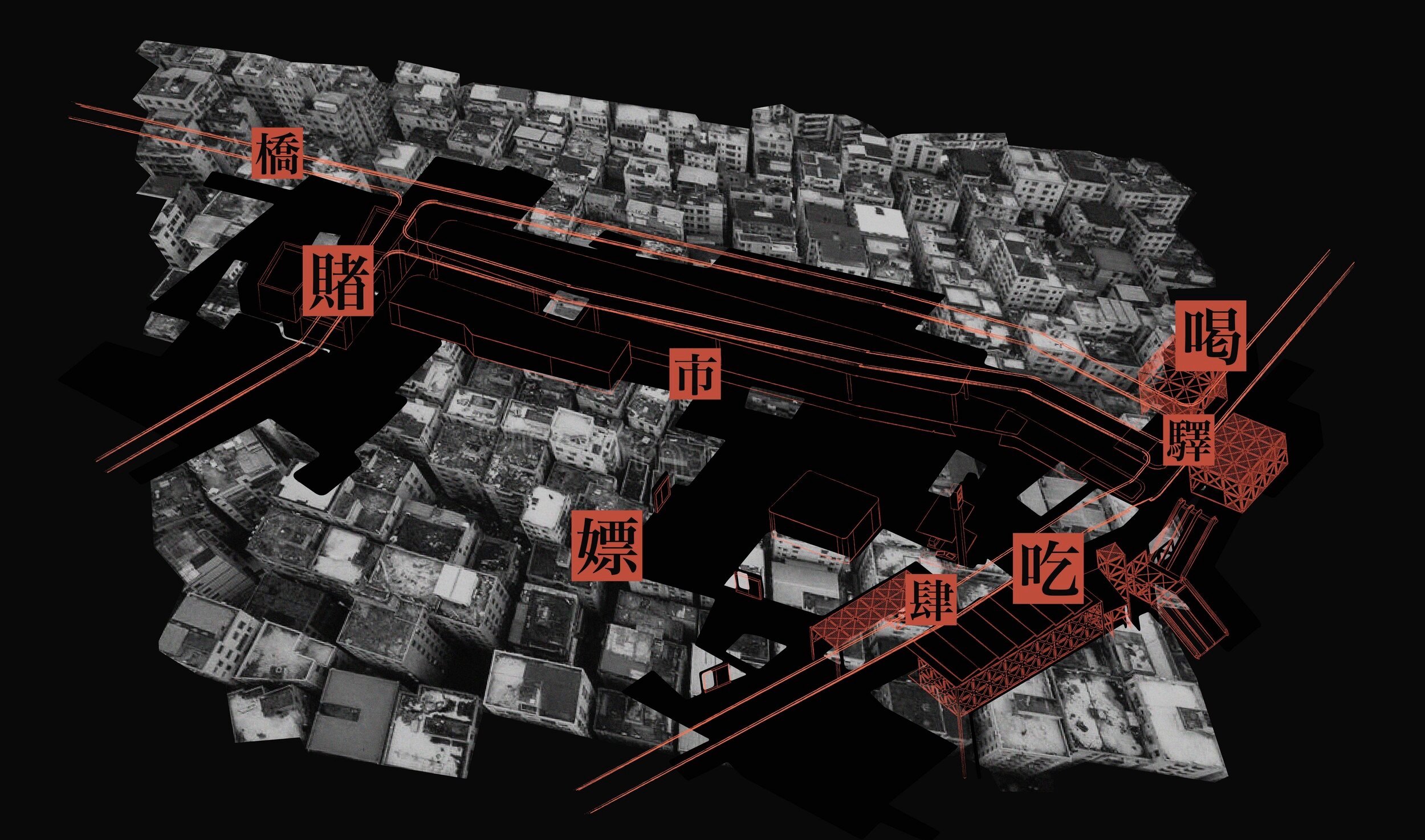
KIU4 [Bridge]
In contemporary China, millions of peasants migrate from rural areas to urban area. These migrant workers, who forsake their native lands and families, find themselves in a vulnerable position within cities. Their integration into urban social society and access to public welfare systems pose significant challenges. In cities like Shenzhen and Guangzhou, where they earn modest salaries, these workers are often limited to residing in factory dormitories or renting dilapidated houses in the city, known as 'urban villages.'
The term 'Kiu4' is the Cantonese pronunciation for 'bridge.' This conceptualises a connection between the rooftops of urban villages while preserving the original ecosystem. This bold and somewhat ironic assumption serves as a poignant reminder of the persistent presence of a less glamorous 'city scar' amid the towering skyscrapers.
As of 2016, the total number of migrant workers in China surpassed 280 million, with over 169 million leaving their hometowns to seek employment elsewhere.
With soaring housing prices in Chinese cities, the demand for informal housing in urban villages is on the rise each year. By 2020, an estimated 277.616 million people are expected to be in need of housing. However, China's fiscal deficit is steadily increasing, diverted to stability maintenance industries, resulting in a shortage of funds for demolitions. This predicament implies that the remaining urban villages may persist and evolve into the last refuge for rural migrant workers.
Design Challenge: Double Duality
China's household registration system (Hukou) has indirectly resulted in significant discrimination within the country. Urban Hukou holders often harbor disdain for those with Rural Hukou. Migrant workers, who relocate from rural hometowns to the central areas of large cities, find themselves at the intersection of two layers of disadvantage. Despite sharing a Rural Hukou with urban village residents, they exist at the nadir of this dual disparity, with their lives far from assured.

The concept of the 'Bridge' seeks to find a middle ground between removal and preservation. Despite the utopian vision embedded with a touch of irony in my design, the challenges faced by urban villages demand our attention. Issues such as dirtiness, dampness, and disorder cannot be instantly resolved. Gray areas, including activities like sex deals and clandestine takeouts, serve a purpose in the city, even as the towering skyscrapers in China captivate our attention.
In grappling with numerous contradictions, the government often adopts a blanket approach. Yet, within the urban village lies a delicate ecosystem. Expelling or targeting specific groups risks undermining the entire city's functionality. What we truly need is greater compromise. Each industry within the urban village plays a vital role, and the 'Bridge' seeks collaboration with all sectors to ensure residents find their place. However, as long as rural-urban dualism persists, the fundamental issue remains unsolved, and a community without 'freedom of movement' will perpetually be a 'utopia'













